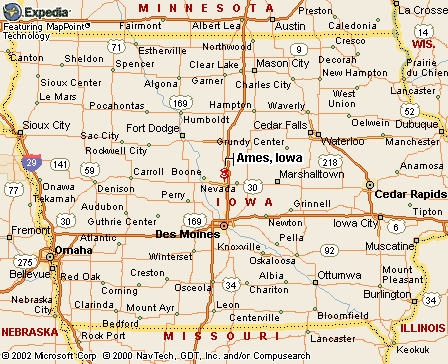|
|
Canku Ota |
|
|
(Many Paths) |
||
|
An Online Newsletter Celebrating Native America |
||
|
March 9, 2002 - Issue 56 |
||
|
|
||
|
Native Woman Nominated for Nobel Peace Prize |
||
|
by Mike Krapfl Ames Tribune
|
||
 AMES,
Iowa - Maria Pearson still remembers that long-ago wind blowing toward
the house and the cottonwoods. AMES,
Iowa - Maria Pearson still remembers that long-ago wind blowing toward
the house and the cottonwoods.
The leaves were tinkling, just like crystal, Pearson said of that spring evening in southwest Iowa near Pacific Junction more than 30 years ago. She stopped, listened and heard her grandmother's voice. Minnie Flute, a Yankton Sioux from South Dakota who had died six years earlier, was telling her granddaughter to stand up for her people. "You must protect where your ancestors lie," Flute's voice said. "But I'm scared," Pearson answered. "How can I do this?" "You'll do it one step at a time." And that's how Pearson - an Ames resident whose Sioux name is Hai Mechea Eunka, Running Moccasins - says she decided to try to change how Iowa, the nation and the world understood the graves of their ancient and native peoples. Now Pearson's work and the resulting laws have an assistant professor in Iowa State University's American Indian Studies Program nominating Pearson for the 2002 Nobel Peace Prize. Pearson showed up at the Iowa Statehouse in 1971, walked up the east steps and went to see the governor. She wanted to know what Gov. Robert Ray was going to do about the cemetery uncovered by crews working on U.S. Highway 34 in southwest Iowa. The heavy machinery had uncovered the graves of 26 white people and one Indian girl and her baby. The white people were reburied. The Indian bones were put in a box and sent to the state archaeologist for study. "That's discrimination," Pearson said last week. "What made those white people not worth studying? The Indian girl has got to remain buried just like everyone else." Ray, who was Iowa's governor from 1969 to 1983 and who spoke from his Des Moines office recently, had no problem remembering that first meeting with Pearson. Before many pleasantries had been exchanged, she told him all about those bones in southwest Iowa. "I listened very intently and carefully," Ray said. "She wanted me to do something about it." Ray started by calling the state archaeologist, and within a few years legislators were debating new laws. Those laws define ancient human remains as those older than 150 years. Those laws create four cemeteries on state lands for the reburial of disturbed remains. Those laws designate the Office of the State Archaeologist as the agency to notify if remains are found. And those laws say the state archaeologist can deny permission to disturb remains that have state or national significance. As the laws were developed and put to work, Ray said he always took Pearson's phone calls. He wanted to hear what she had to say. He wanted to know what he could do to help. And he and his staff had learned they could trust what she told them. Iowa has been ahead of other states in protecting ancient burial grounds. "Iowa is a model for the country," said John Doershuk, who directs the general contracts program for the Office of the State Archaeologist at the University of Iowa. "It's only in the last 10 years that the rest of the country has been catching up." But it took some pushing. Pearson tells stories of confrontations, insulting meetings, court fights, violence. But she's not one to give up. "Once she gets something in her mind - a goal - she sticks to it and gets it accomplished," said Royal Kerchee, a sergeant with the Altoona Police Department who has worked with Pearson for about six years on the state archaeologist's Indian Advisory Committee. Larry Gross wrote the letter nominating Pearson for the Nobel Peace Prize. "I'm just in awe of her," said Gross, an ISU assistant professor in the Indian studies program and the religious studies department. "The thing about Maria is that she's a warrior. She picks her battles carefully. She doesn't take every fight. But I tell you this, when she takes a fight, she wins." Sit down with Pearson and you'll hear laughter, you'll hear about growing up in South Dakota, you'll hear about three husbands, six children, 27 grandchildren, 10 great-grand- children and two great-great- grandchildren, you'll hear about talks with ancestors and you'll hear about a house next to six graves. Growing up, Pearson was taught not to play on those graves. "We learned that respect for our ancestors," she said. To show support
|
|
|
||
|
|
||
| Canku Ota is a free Newsletter celebrating Native America, its traditions and accomplishments . We do not provide subscriber or visitor names to anyone. Some articles presented in Canku Ota may contain copyright material. We have received appropriate permissions for republishing any articles. Material appearing here is distributed without profit or monetary gain to those who have expressed an interest. This is in accordance with Title 17 U.S.C. section 107. | ||
|
Canku Ota is a copyright © 2000, 2001, 2002 of Vicki Lockard and Paul Barry. |
||
|
|
|
|
|
The "Canku Ota - A Newsletter Celebrating Native America" web site and its design is the |
||
|
Copyright © 1999, 2000, 2001, 2002 of Paul C. Barry. |
||
|
All Rights Reserved. |
||

